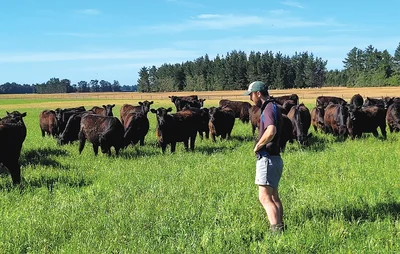Fencing rethink crucial to farm plan

A new electric fencing system has allowed a Mid Canterbury farm to run a sharp rotational grazing system usually only seen on dairy farms, says Glenview farm manager Jack Dwyer.
Across 475 hectares of some of New Zealand’s most scenic farmland in Mid Canterbury, Glenview, a beef farming system owned by former Anzco Foods founder Sir Graeme Harrison has put its first foot forward.
Harrison’s total farm area covered over 2300 hectares and encompassed properties at Mt Alford, Pudding Hill and Highbank. The most recent addition was Glenview, where the farm had been completely overhauled with the new permanent electric fencing system.
“It is an intensive operation, so we want to make it pay for itself,” Dwyer said. “To help us manage our animals effectively, we tore out almost all the fencing and re-fenced more than 60kms of the property using an electric fencing solution, including powering it up with energizers.”
Each paddock was about eight hectares in size, divided in the middle with a two-wire fence. This allowed sheep to go underneath, but cattle to be effectively managed. There were water troughs one-quarter and three-quarters along the two-wire fence. It meant each four-hectare half could be split into four one-hectare or eight-half-hectare grazing strips.
“This set up means we can run short sharp rotational grazing where we get mobs of 40 to 50 cattle doing a 24-day rotation in one eight-hectare paddock if the growth is adequate,” Dwyer said.
As the grazing rotation continued into summer, lambs were brought into the system and replaced cattle in some paddocks.
Mobs of between 800 and 1400 lambs followed in the rotation and were given the full eight hectares to graze out.
“It’s been a system of trial and error. We’ve spent the last few years figuring out what works and what doesn’t, but the system and gear we now have has been absolutely key to helping us manage feed and maximise animal productivity,” Dwyer said. “It also allows us to easily drop out halves of paddocks to be cut for supplementary feed.”
Across all the farms, the operation runs a total of 2700 perendale ewes, with plans to lift that number to about 4000 over the next couple of years.
It calved 500 angus cows this season and last season raised 240 angus steers for Five Star Beef and finished 830 friesian bulls, and 4000 lambs, with the hope to see those numbers rise in the next few seasons.
- Pat Deavoll

